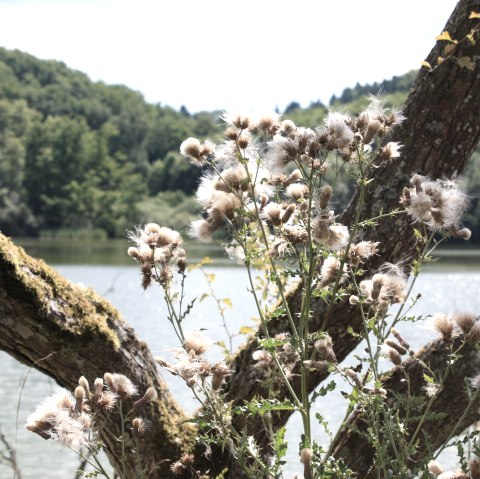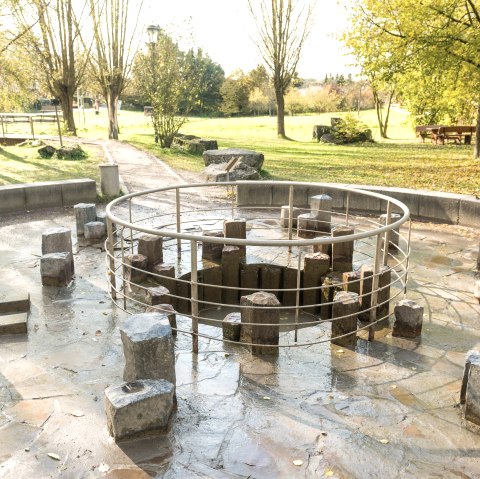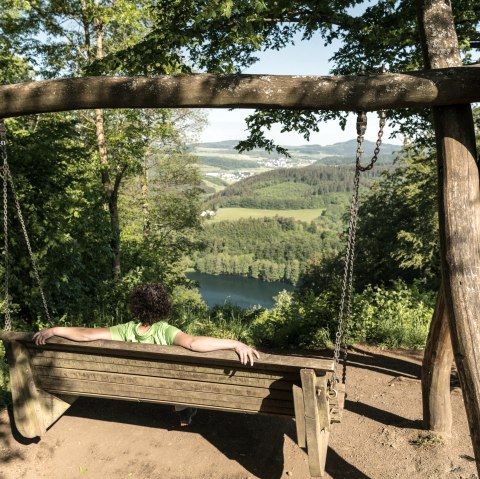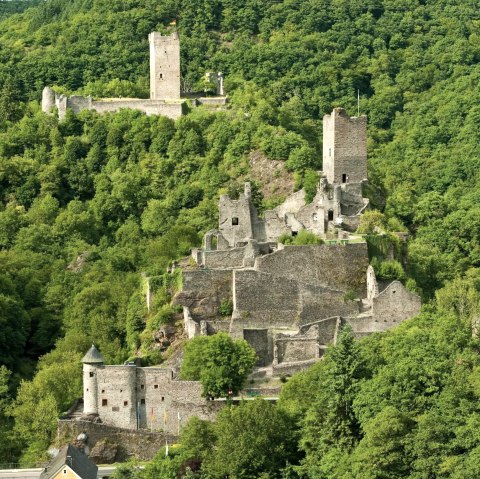Meerfelder Maar
Meerfeld
The Maar was created in an explosion about 80,000 years ago. The power of volcanic activity broke the slopes of the Maar basin in clods. However, this uniqueness can hardly be seen with the naked eye. The impressive olivine bombs are visible evidence – they are round rock blocks made from the mineral olivine which were ejected when the volcano erupted.
In the south the pretty village Meerfeld nestles on the steep slopes. Here the flowing Meerbach flooded loose material ejected during the eruption. So the water was pushed into the northern part and the approximately 18 meters deep Maar lake was born. But not only natural circumstances contributed to the downsizing of the Maar lake: During the 19th century parts of the Maar basin have been artificially drained in order to create additional agricultural land. Currently the lake, which lies at an altitude of 335 metres a.s.l., has a water surface of 24.8 hectares and is approximately 18 metres deep.
Visitors can discover these and other unique evidence of the region’s volcanism on one of the numerous tours through the protected area. In addition you can observe the diverse Flora and Fauna of the Maar which enchants with rare species of waders, wet meadows and sedge. In the south a wide reed zone has formed, which is home to all kinds of animals.
Water sports enthusiasts also get their money’s worth in Maar: Besides fishing it is possible to swim in destinated areas on the north shore and to cool off in the refreshing water after a tour. The bathing season in the natural swimming pool Meerfeld Maar lasts from May to September.
Parking:
Besides a few parking spaces in Meerfeld there is also a designated parking space on the southeastern shore, which can be reached via the K10.
These hiking trails lead past the Meerfelder Maar:
- Heimatspur LW Lava Weg Deudesfeld
- Vulkamaar Pfad
- Geo-Route Maarmuseum Manderscheid
- Vulkanweg (Eifelverein Nr. 13)
What is a maar?
The term maar is derived from the Latin "mare" (=sea). It is a type of funnel-shaped volcano formed by eruptions of water vapour, which is "blasted" into the landscape and often presents itself as a bowl-like shape. A maar is formed when rising magma meets water-bearing rock layers. Violent explosions occur and the surrounding rock is shredded together with the magma into its smallest components and thrown out of the explosion funnel. A cavity forms in the area of the explosion hearth, which merges into an explosion vent. As the rock above the cavity collapses, the explosion vent becomes a collapse or maar funnel. After the volcanic activity subsided, the funnels subsequently filled with water. A total of over 70 maar volcanoes have been counted in the Eifel, twelve maars are still filled with water today, the rest have already silted up.











